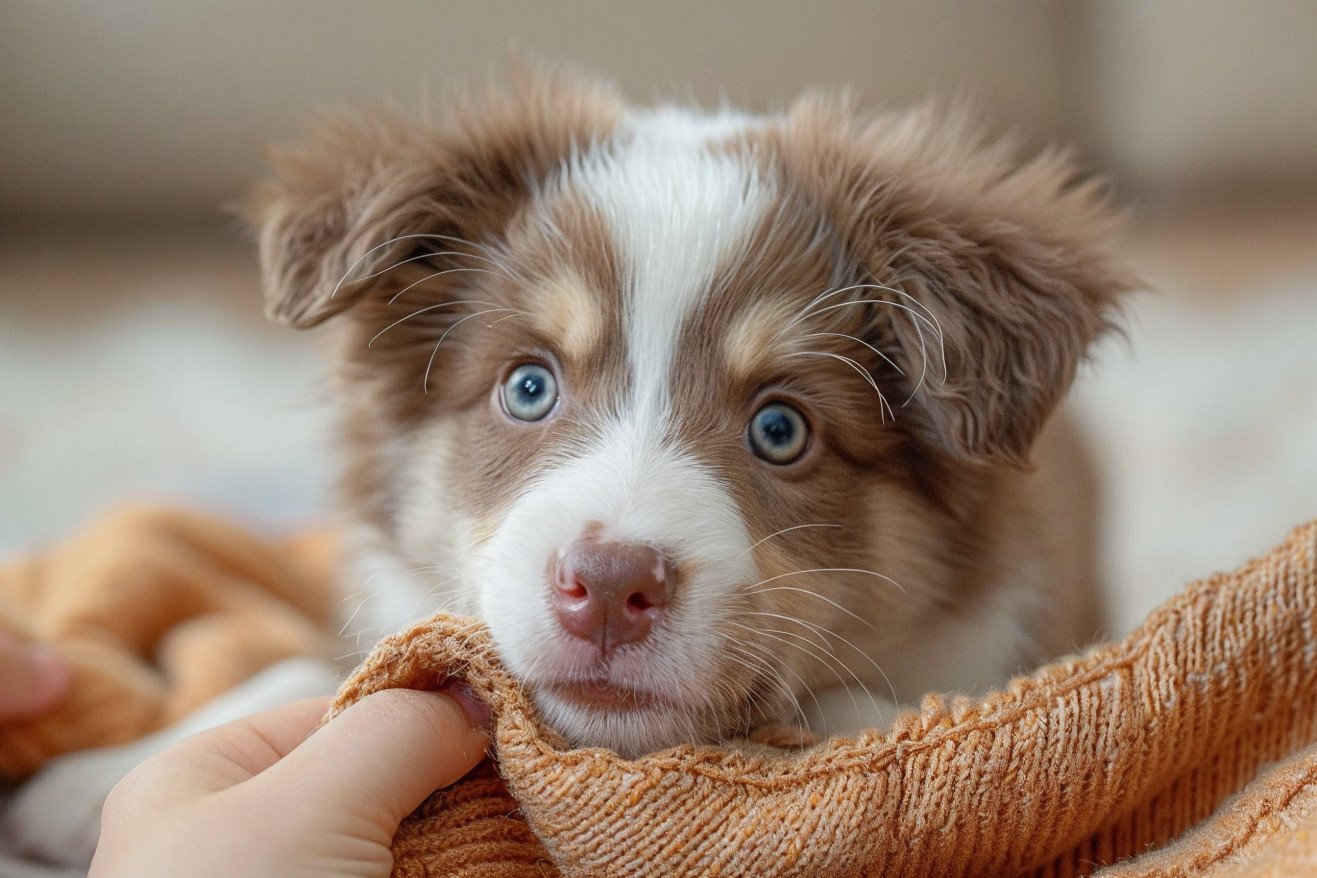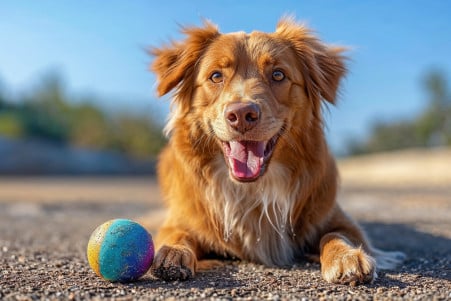Object Permanence in Dogs: What Research Shows About Canine Cognition
1 April 2024 • Updated 1 April 2024

Do your dogs know you still exist when you leave the room, or are they unable to form the concept of object permanence, a cognitive skill human infants develop? Dogs do have object permanence. This is the ability to understand that objects continue to exist even when they are out of sight. However, dogs develop this skill later than human infants, and it may be influenced by their individual experiences and training.
To learn more about this interesting topic in canine cognition, we'll take a look at studies in animal behavior, developmental psychology, and evolutionary biology. This work will help us better understand how dogs process information, the scope of their cognitive abilities, and what it means for our relationships with our pets. We'll cover the most recent scientific findings to help you better understand and connect with your furry best friend.
Do dogs have object permanence?
Object Permanence Milestones in Puppies
Research from PubMed suggests that object permanence is a cognitive skill that puppies develop in a series of stages. The first stage of object permanence development is the ability to visually follow objects, which is followed by the ability to find objects that are partially hidden, and then objects that are completely hidden but that the puppy saw being hidden.
As noted in Woof Like To Meet, by the time puppies are around 5 weeks old, they can find objects that are partially hidden that they were watching. This visible displacement comprehension then develops quickly until about 8 weeks. However, the ability to understand invisible displacement, or find objects that are completely hidden that the puppy didn't see being hidden, doesn't develop until puppies are about a year old.
After initially reaching object permanence milestones earlier than human babies, puppies' development then lags behind that of children. The development of this important cognitive skill is closely connected to the development of other self-regulatory skills, such as the ability to cope with separation anxiety. It's important to ensure that puppies are properly supported in their development of object permanence to ensure healthy cognitive development and successful training in the future.
What Determines a Dog's Object Permanence Ability?
Dogs' varying success on object permanence tasks has led researchers to suggest a number of factors that may influence this cognitive skill. As the PMC study notes, some dogs may be relying on perceptual or conditioning processes, while others are truly forming a cognitive representation of object permanence.
Meanwhile, the Zentall and Pattison study suggests that experience and training can also have a big impact on a dog's ability to understand hidden objects. Other studies have shown that the difficulty of the task, the length of the delay, and environmental factors such as the brightness of the room can all affect a dog's ability to follow invisible displacements.
Given that some dogs are good at finding hidden objects and others aren't, it's clear that more research is needed to understand the underlying factors that lead to these individual differences. As the PMC study points out, more research is needed to understand the cognitive processes involved in object permanence and how they may be shaped by a dog's training and experience.
Evolutionary Origins and Comparisons with Other Animals
Research comparing domestic dogs with their wild relatives, such as gray wolves, has shown that object permanence skills are not a byproduct of domestication. For example, an PubMed study demonstrated that adult dogs and wolves were equally successful in finding disappearing objects, including visible displacement tasks and invisible displacement tasks. This suggests that the physical cognition for finding hidden objects is the same in domestic dogs and gray wolves and not a result of domestication.
In contrast, research comparing dogs with great apes has shown that there are big differences in the mental representation of invisible displacements. In a PMC study, apes were successful in all conditions of an invisible transposition task, while dogs showed a strong bias to approach the last place they saw the reward, especially if that location was still occupied. This shows that there is a big difference between great apes and dogs in the cognitive processes needed to keep track of the invisible displacement of objects.
One possibility is that, as suggested in the PMC study, canids like dogs may not have the cognitive skills necessary to mentally represent the displacement of invisible objects. On the other hand, this ability may have been lost in dogs as a result of domestication, as more advanced forms of spatial representation became less important. These comparisons help researchers better understand the evolutionary origins and trajectories of object permanence in different species.
Breed Differences and Heritability of Object Permanence
Studies have shown that cognitive traits, including object permanence, are highly heritable in dogs. For example, a study in PMC found that scores on a memory factor, which includes object permanence, were moderately heritable across dog breeds. This suggests that there may be differences between dog breeds in object permanence and other memory skills, which may be the result of selective breeding for certain cognitive traits.
That said, as noted in a PubMed study, most studies have not found differences in object permanence between different dog breeds. In this study, terriers, sporting dogs, and working dogs all performed similarly on invisible displacement problems.
While genetics and breed may be factors, more research is needed to determine the impact of these factors on a dog's object permanence. As the authors of the PMC study point out, more work is necessary to determine how much breed differences and heritability contribute to this important cognitive skill in our four-legged friends.
Applications in Dog Training and Behavior Modification
The study of object permanence in dogs has several potential applications in dog training and behavior modification. As Zentall and Pattison point out, including activities and exercises that challenge a dog's object permanence in their daily routine can help keep them mentally stimulated and enriched. In addition, training that is based on object permanence can be used to teach dogs new commands and behaviors.
Moreover, working to improve any deficits in object permanence can be used to help dogs overcome behavioral problems or anxiety, according to the Dogster article. By taking into account a dog's cognitive development and object permanence, trainers and owners can create training programs that are more personalized and effective in helping their dogs.
Conclusion: Understanding Dogs' Cognitive Abilities
In conclusion, dogs do have a sense of object permanence, but it develops later in their lives than it does in human infants. The studies also show that a dog's object permanence can be impacted by a number of factors, including individual differences, training, and environmental and social factors.
Research into dogs' object permanence can help us better understand their cognitive development and mental representation. This, in turn, can help us improve our training techniques, overcome behavioral problems, and strengthen the bond we have with our dogs. Future research in this area is likely to continue to expand our knowledge of the fascinating ways in which dogs think.


